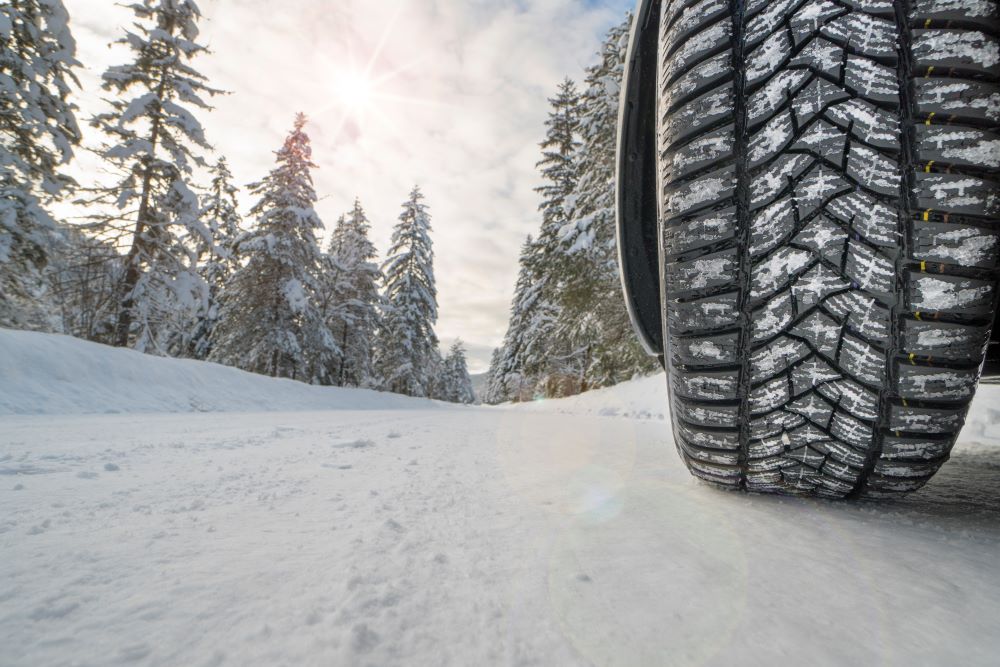Perspective
First flakes fly this month. Are you ready?
November 1, 2021
by PEMCO Insurance
You wouldn't necessarily know it by Seattle and Portland weather, but most of the Northwest experiences its first snowfall in November. While you've likely prepped your home and car for the cold, have you brushed up on important skills you haven't had to use since last winter?
Here are our top-20 Northwest winter refreshers:

Driving on ice
- Slow down when temperatures approach freezing. Even if the pavement seems dry, you don't want to be traveling at regular highway speed if you suddenly encounter a frozen section. "Black ice" isn't black at all. It's transparent and looks like an innocent patch of wet road. The black you see is just the pavement showing through.
- Turn on your headlights. Their reflection may help you spot icy pavement ahead. Slow down before you reach it.
- Increase following distances and watch the car ahead of you. If you notice the driver avoiding sections of the road or slipping, there's likely ice ahead.
- Do as little as possible. Because black ice tends to occur in short patches, the best strategy may be to try to allow the car to coast over it safely. Keep your steering wheel straight and take your foot off the accelerator. Hard braking or swerving (as in any icy situation) will make things worse.
- Correct gently if you start to skid. Keep braking to a minimum and steer the car in the direction you want it to go. Sometimes you hear it called "steering into a slide," but that term can be confusing. If, for example, the rear of your car is sliding to the right, the front of your car will point slightly to the left. Turn the wheel to the right to re-center the car in its lane. Once it begins to respond, start straightening the wheel to avoid over-correcting.
- Don't assume you're "ice safe" if you have all-wheel or four-wheel drive. Regardless of your vehicle, ice leaves your tires nothing to grab for traction.
- If you're spun out and can no longer maneuver the car, here's what to do.
Using space heaters
- Check that the guard around the heating element is still intact. If not, don't use it. Replace older heaters with new ones that shut off automatically if they tip over.
- Set the space heater on a hard, nonflammable surface (never carpet) and plug it directly into the wall, not an extension cord.
- Keep drapes, bedding, piles of clothes and all combustibles at least three feet away.
- Turn off space heaters when you leave the room and before you go to bed.
Using a woodstove or fireplace
- Install a carbon monoxide detector on every level of your home.
- Don't burn overnight or close the damper with hot embers in the fireplace. You risk forcing toxic carbon monoxide into the house.
- Clean your chimney more than once a year if wood is your primary heat source. That helps prevent creosote buildup, which forms when unburned gases condense onto cooler surfaces inside the firebox and flue. Creosote is combustible and, once ignited, can crack chimney tile and mortar, exposing your home's wood frame to the flames.
- Burn only dry wood (never trash) to reduce creosote buildup.
- Empty ashes into a covered metal container and store them away from combustibles. Wait until they're cold before dumping them in the trash.
Removing snow
- Check your city's website for any new requirements to clear snow on the public sidewalk. Here's what we know for a few cities in Washington (scroll to the end of the page) and Oregon. Do only what's safely within your physical capabilities. Something everyone can do: Buy a bag or two of deicer that you can sprinkle on stairs, walkways and patios. Just be sure to look for "pet safe" on the label. Avoid using home-remedy deicers like lawn fertilizer since they can be corrosive to metal, damaging to concrete, and dangerous to pets, some plants and local waterways.
- Arrange for professional roof shoveling if you think you may need it. Likely, though, your roof can handle more weight than you think!
Running a portable generator
- Check that the wattage of appliances you plan to plug in still matches your generator's capabilities (something that may have changed if you replaced any appliances this year).
- Check that you still have tarp materials on hand so you can tent the generator if it's raining or snowing when you need to use it. Here's more to know about generators.
Share on social media